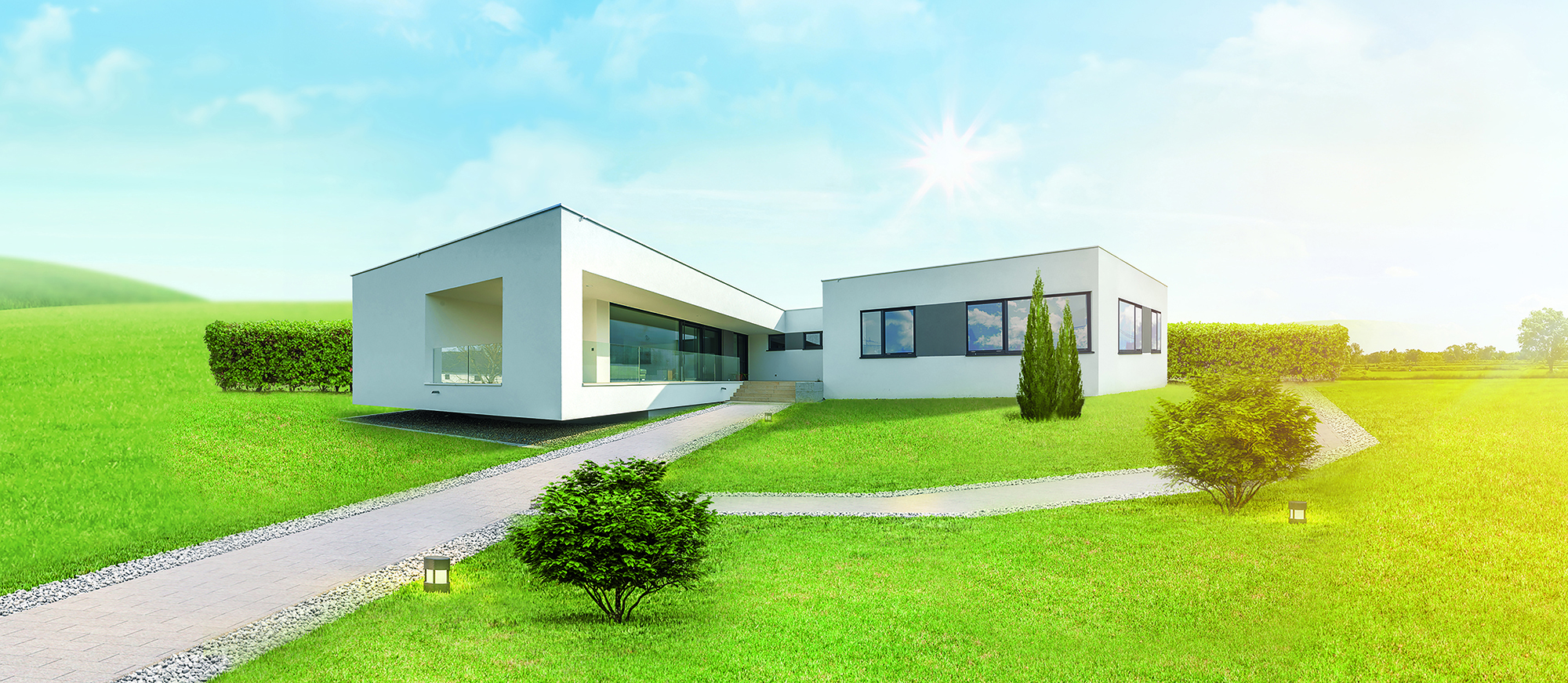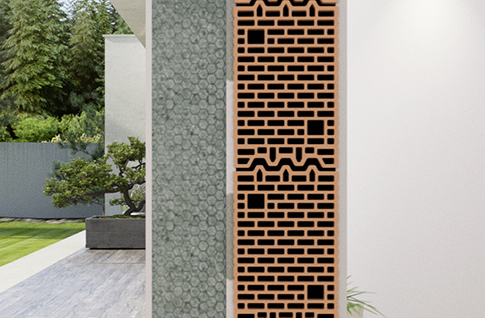According to research, there are three key principles to consider when building a sustainable home: thermal insulation, external-wall materials, and indoor air humidity. Good thermal insulation not only makes a significant contribution to a building’s energy efficiency, it keeps walls warm in winter and pleasantly cool during summer. This temperate quality is essential to occupants’ long-term comfort and wellbeing. The purity of indoor air is also crucial to our health; particularly when it’s considered we inhale up to 13.5kg of interior air, compared to 1.5kg of fresh air, per day.

Desirable interior
The most effective method for creating a healthy living space is to optimally insulate the façade - the better the insulation, the more comfortable the space will be. The specification of quality External Wall Insulation (EWI) can help achieve this desirable level of interior comfort. It’s a solution that is particularly effective in multi-occupancy properties.
Through everyday living, residents create water vapour. Baths, washing, cooking… it all creates steam - even breathing. Now, consider how much vapour is generated in a multi-occupancy building containing, say, 150 tenants. All that vapour will pass through the building’s elements, but in cases where the EWI contains a non-vapour permeable acrylic topcoat, the vapour will be trapped. This can lead to increased air humidity, condensation and the dreaded “d” word - damp, which once inside a property, can take an awful lot of time and expense to remove. Therefore, an EWI solution that might have appeared cost-effective in the immediate-to-short-term, could potentially result in unnecessary and unforeseen expenditure.
Robust frontage
Applying a non-breathable renovation system to a building causes what might be referred to as the “plastic bag effect” - walls can become cloaked in condensation from non-escaping vapour. To create a breathable outer layer for buildings an External Wall Insulation system topped with a silicon-based finish render, such as Baumit’s SilikonTop, is preferable. Water-repellent, stain and weather resistant, the system provides a robust white or coloured façade, whilst optimising occupants’ living environment. SilikonTop is also suitable for use without EWI, and can be easily applied to mineral renders old and new, providing a decorative, vapour-permeable topcoat that makes for an attractive exterior.

No compromise
There are a couple of very good reasons for choosing EWI over interior insulation. 
Unlike the interior option, floor space isn’t compromised with exterior insulation. A few millimetres’ less living room in a building containing multiple flats and potentially hundreds of walls, for instance, amounts to a sizable loss of space, which for private landlords could mean a reduction in income.
Another benefit of ‘going external’ when it comes to wall insulation? EWI removes the dew-point - the temperature below which water droplets condense – from the inside of a building to prevent condensation forming. Baumit openSystem provides a perfect example of an EWI system that let’s go of moisture and retains airtightness. Its unique perforated Expanded Polystyrene (EPS) façade insulation boards ensure high vapour permeability, resulting in the release, rather than the entrapment, of water vapour. It has the added benefit of having no effect on a building’s airtightness.
The light fantastic
OpenSystem comprises six, high-quality vapour permeable components. It includes Baumit NanoporTop, an innovative self-cleaning topcoat render which uses ‘photokat’ photocatalysis technology to create optimum protection against contamination using the power of light.
The system is also made up of Baumit PremiumPrimer, a superior quality primer for pre-treatment of hard or non-absorbent mineral substrates; and the aforementioned EPS boards. When applied as part of a new-build or refurbishment project, each component helps increase a structure’s ‘breathability’ to collectively offer outstanding levels of insulation.
In short: EWI improves the aesthetics on the outside and the building’s thermal performance without affecting the interior space.
For a damp, moisture-free, healthy-living interior, Baumit’s range of lime-based, thin-coat plasters offers an excellent option. Baumit KlimaDekor, for example, is vapour permeable and low in emissions, making an ideal environmentally-friendly, breathable plaster for interiors of all shape and size. We spend 90% of our lives doors, therefore providing a quality finish for interior walls would appear paramount to our well-being.
There can be no doubt the government is right to address the alarming statistic provided by the Green Building Council report which stated 25 million homes across Britain will not meet insulation standards by 2050. However, air tightness can mean as well as retaining heat; our buildings are also retaining moisture - which creates problems of its own.
Allowing buildings to breathe on the outside will not only ensure those living on the inside are living a lot happier and healthier; a good thermal insulation can help reduce household heating costs by up to 50%, which in itself is a great comfort provision.
Visit our guide pages to read more about the different Externall Wall insulation systems available from Baumit:
